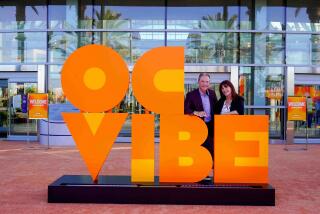Private Rail Line: All Aboard?
As Orange County freeways become more congested and money to improve road and freeway conditions becomes more scarce, several transportation concepts that may have sounded farfetched or infeasible several years ago are getting new attention.
One approach is the use of toll roads. Another is what transportation officials call “privatization,” which means attracting private capital to build public projects, like a small rail system. Specifically under consideration is the idea of a 13-mile line from Anaheim Stadium to South Coast Plaza in Costa Mesa, with stops in between at key population points, like the county civic center.
The $451-million rail project, which a consulting firm says is financially possible, is a scaled-down version of the 38-mile rail line that was part of the Proposition A measure which failed to pass last June.
The Orange County Transit District is wise to explore the possibility of the smaller system and whether business would be interested in investing in it.
Transportation officials recognize the need for improving freeway capacity by adding more traffic lanes, and setting aside some of those new lanes exclusively for car and van pools and express buses. But officials like James Reichert, the Transit District’s general manager, also recognize that just adding more and more traffic lanes will never be enough. They know that more innovative ways must be found to move more people faster.
That’s why they are such strong advocates of what they call the multimodal approach, which is nothing more than a balanced transportation plan that includes the automobile, a well-maintained freeway system, local and express buses, car and van pools, park-and-ride lots, and, eventually, rail lines.
The defeat of Proposition A didn’t mean that county residents oppose that approach in general and rail transit in particular. Surveys of public attitudes since the election show that a majority of county residents want public transportation improved. Some people voted against the proposition because it included rail transit and others because it didn’t include enough rail. But most rejected the measure because they were against the one-cent increase in the sales tax it called for. A good solution, if it could be worked out, would be for private industry to build a rail line, even if it takes some public help. Everyone could benefit. The investors, by building the rail system using tax-exempt industrial development bonds, could make a profit and realize tax advantages not eligible to the Transit District. And the public could obtain rail transit at about half the capital cost it would otherwise have to pay.
The idea is still in its preliminary stage. Many other critical factors must still be determined, such as the level of potential ridership and support and possibly investment money from cities along the route, where stations would be located. But the Transit District has already received several inquiries from private firms interested in the concept. It should aggressively pursue them. Rail transit should be part of the county’s overall transportation plan. It would help if private industry were also a part of plan.
More to Read
Sign up for Essential California
The most important California stories and recommendations in your inbox every morning.
You may occasionally receive promotional content from the Los Angeles Times.










